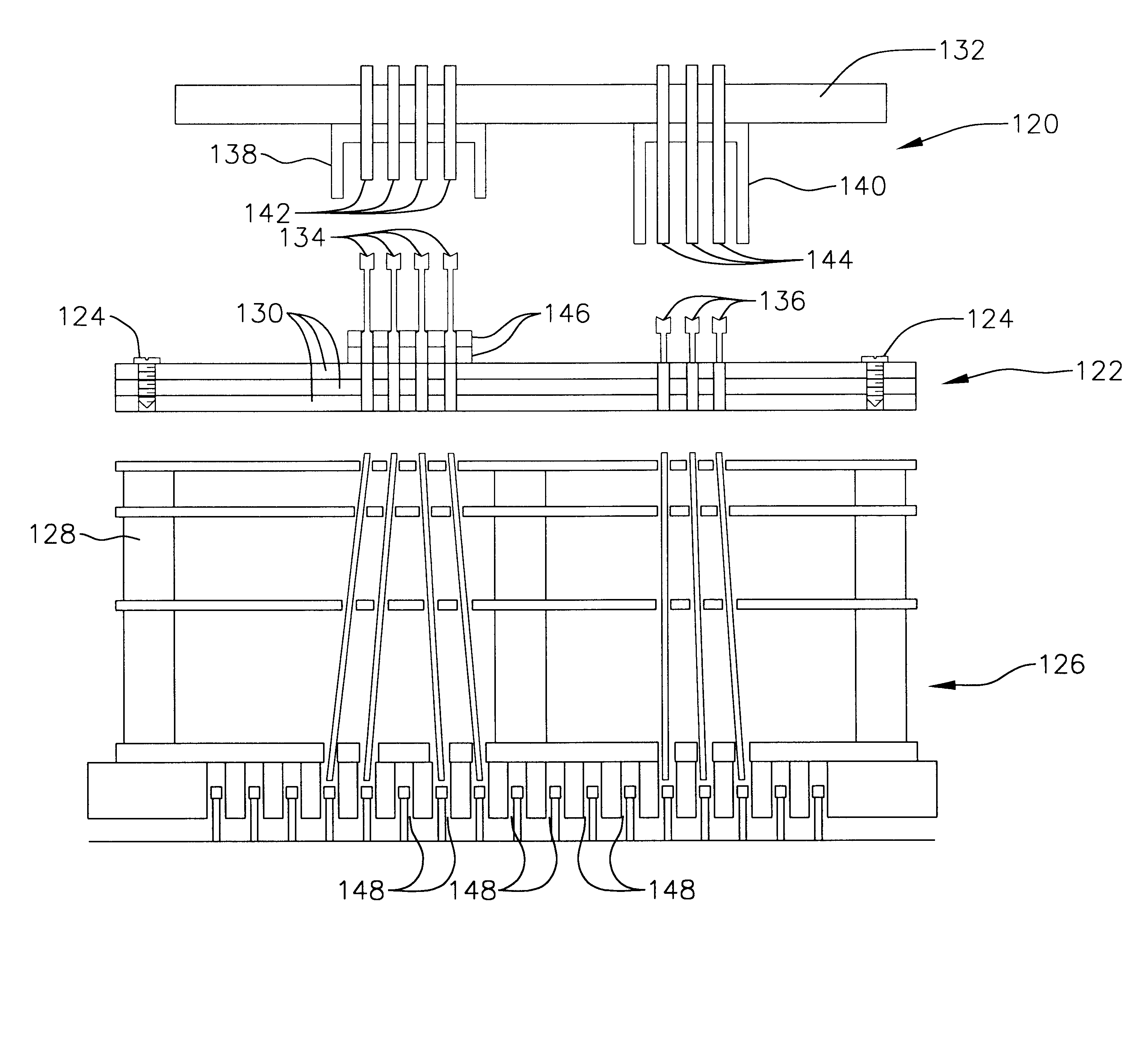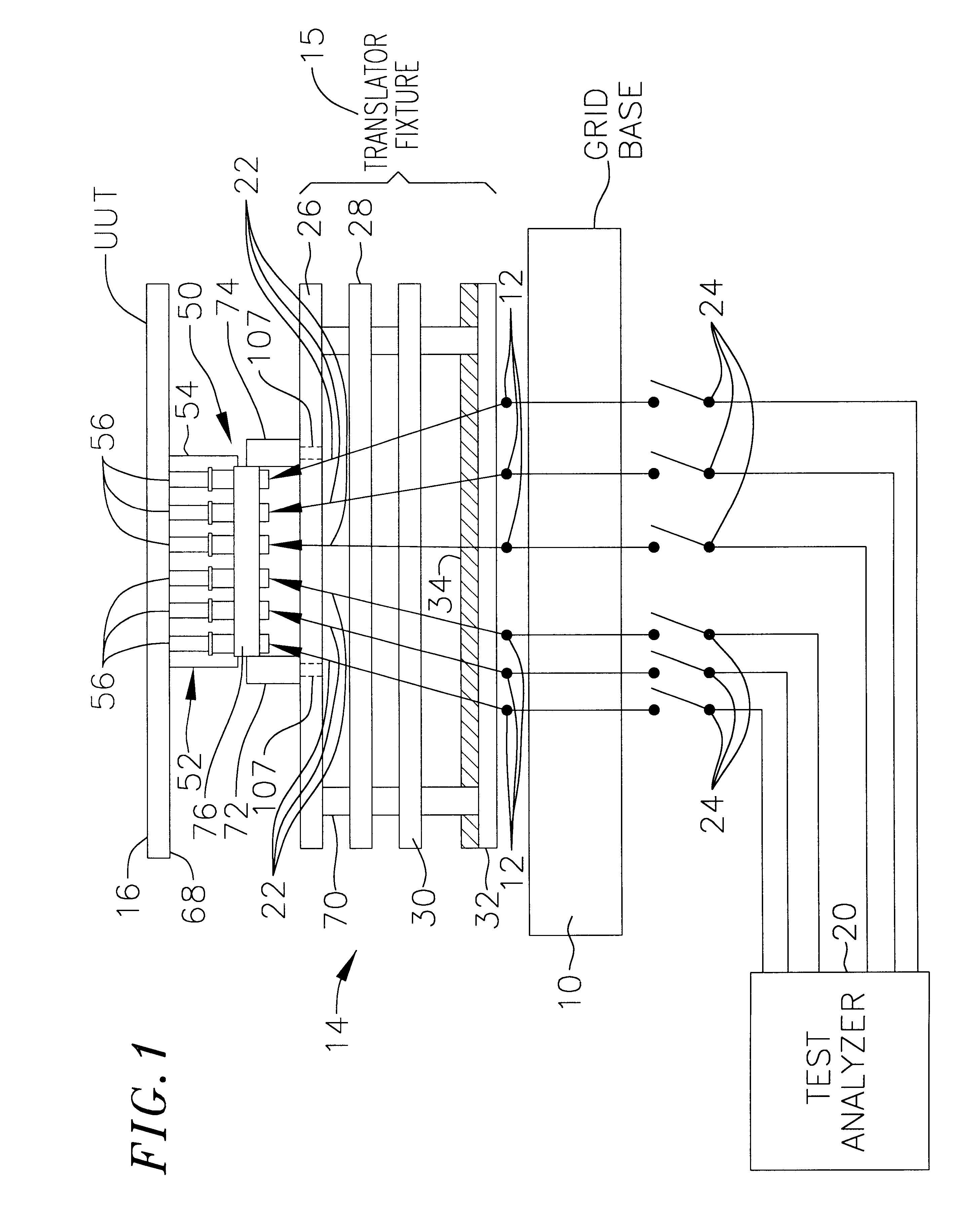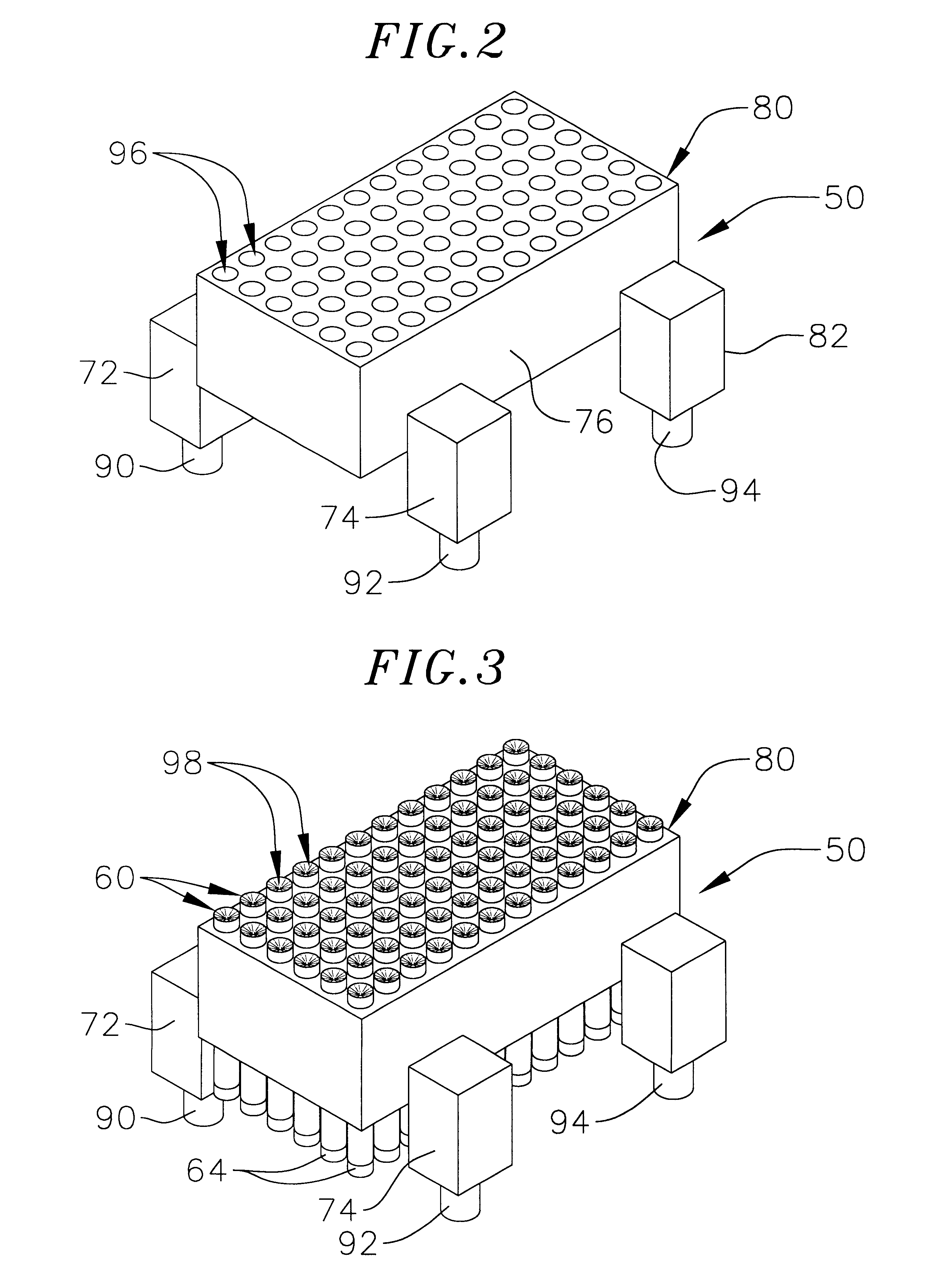Test fixture for testing backplanes or populated circuit boards
a test fixture and backplane technology, applied in the direction of electronic circuit testing, measurement devices, instruments, etc., can solve the problems of high material cost of spring loaded contacts, high cost of dedicated arrangements for large, and high point count backplanes
- Summary
- Abstract
- Description
- Claims
- Application Information
AI Technical Summary
Benefits of technology
Problems solved by technology
Method used
Image
Examples
embodiment 14
Translator fixture 15 includes a series of vertically spaced-apart and parallel translator plates 26, 28, 30, 32, which may include a top (outermost) plate 26, an upper plate 28 spaced a short distance below the top plate 26, one or more intermediate plates 30, and a grid facing plate 32 at the bottom of the translator fixture. The translator plates are supported in parallel, vertically spaced apart positions by rigid posts 70 that hold the fixture 15 together as a rigid unit. The fixture 15 also includes an array of standard translator pins such as tilt pins represented schematically at 22 extending through holes (not shown) in the translator plates. FIG. 1 represents only six translator pins for simplicity, but it should be understood that any number of such translator pins 22 may be used depending upon the number of posts 56 and other contact points (not shown) to be tested on the board 16. The tilt pins extending through the base plate 32 of the fixture 15 are in alignment with ...
first embodiment
Completing the system of the first embodiment is a guide block 50 which is positioned directly beneath the distal ends of the posts 56 and which, in preferred form, comprises a rectangular, molded or machined plastic block 76 having a top surface plan 80 which is undersized compared to the opening 120 of the connector 52. Thus, the guide block is dimensioned to be inserted within the opening 120 so as to permit the surface 80 to be spaced close enough to the posts 56 to permit the pins 60 to contact and engage the distal ends of the posts 56 when pins 60 are extended, at least in part to the "up" position, i.e. as shown in FIG. 6. Block 76 also includes integrally formed rectangular legs 72, 74, 82, 104, which legs 72, 74, 82, 104 include respective cylindrical portions 90, 92, 94, 106 for mounting into matching holes (shown in phantom at 107) formed in the outermost plate 26 of the fixture to removably affix the guide block 76 to the outermost plate 26. As seen in FIGS. 2 and 5, le...
PUM
 Login to View More
Login to View More Abstract
Description
Claims
Application Information
 Login to View More
Login to View More - R&D
- Intellectual Property
- Life Sciences
- Materials
- Tech Scout
- Unparalleled Data Quality
- Higher Quality Content
- 60% Fewer Hallucinations
Browse by: Latest US Patents, China's latest patents, Technical Efficacy Thesaurus, Application Domain, Technology Topic, Popular Technical Reports.
© 2025 PatSnap. All rights reserved.Legal|Privacy policy|Modern Slavery Act Transparency Statement|Sitemap|About US| Contact US: help@patsnap.com



